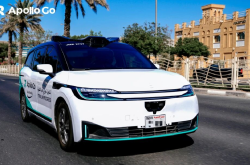European Auto Market | April 2025 in Germany: BYD Surpasses Tesla, Marking the Rise of Chinese Brands
![]() 05/13 2025
05/13 2025
![]() 656
656
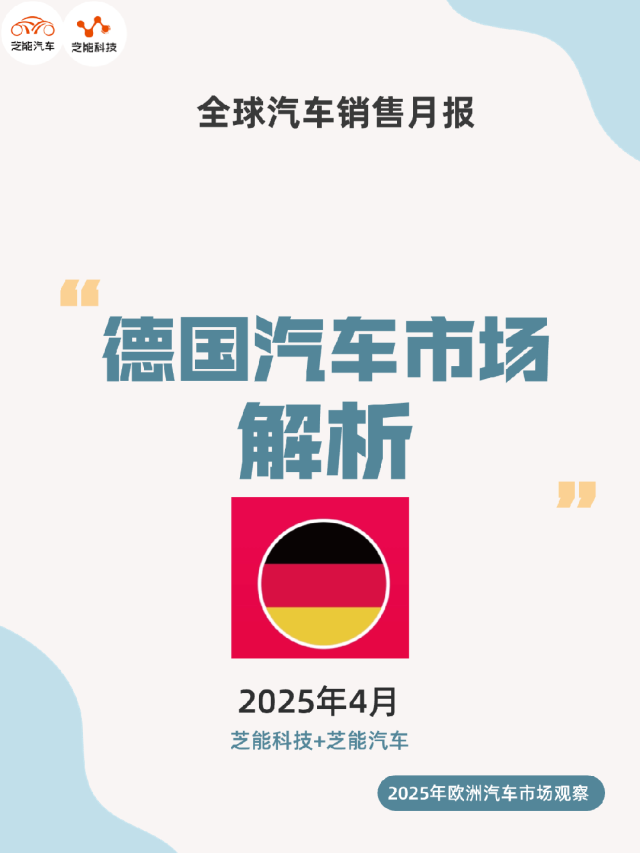
In April 2025, the German new car market exhibited overall stability, yet the competitive dynamics within the electrification sector subtly shifted. For the first time, BYD outpaced Tesla in monthly sales, signaling a pivotal stage in the penetration of Chinese brands into mainstream European markets.
Let's delve into the broader trends of the German auto market, the electrification movement, and the brand landscape to dissect the multifaceted drivers behind BYD's resurgence. Furthermore, we'll discuss the current competitive scenario and future potential of Chinese automakers in the German market.
01
German Auto Market Overview - April 2025:
Structural Changes Amidst Declining Volumes
In April 2025, the German new car market registered 242,728 units, experiencing a minor year-on-year decline of 0.15%. However, this figure was still 22% lower than the pre-pandemic levels of 2019, indicating a lingering trend of subdued market recovery.
Cumulative sales for the first four months stood at 907,299 units, a 3.3% decrease year-on-year, reflecting a lingering hesitancy among consumers to purchase new vehicles.
Brand Landscape: Volkswagen Maintains Dominance, Cupra Shows Explosive Growth
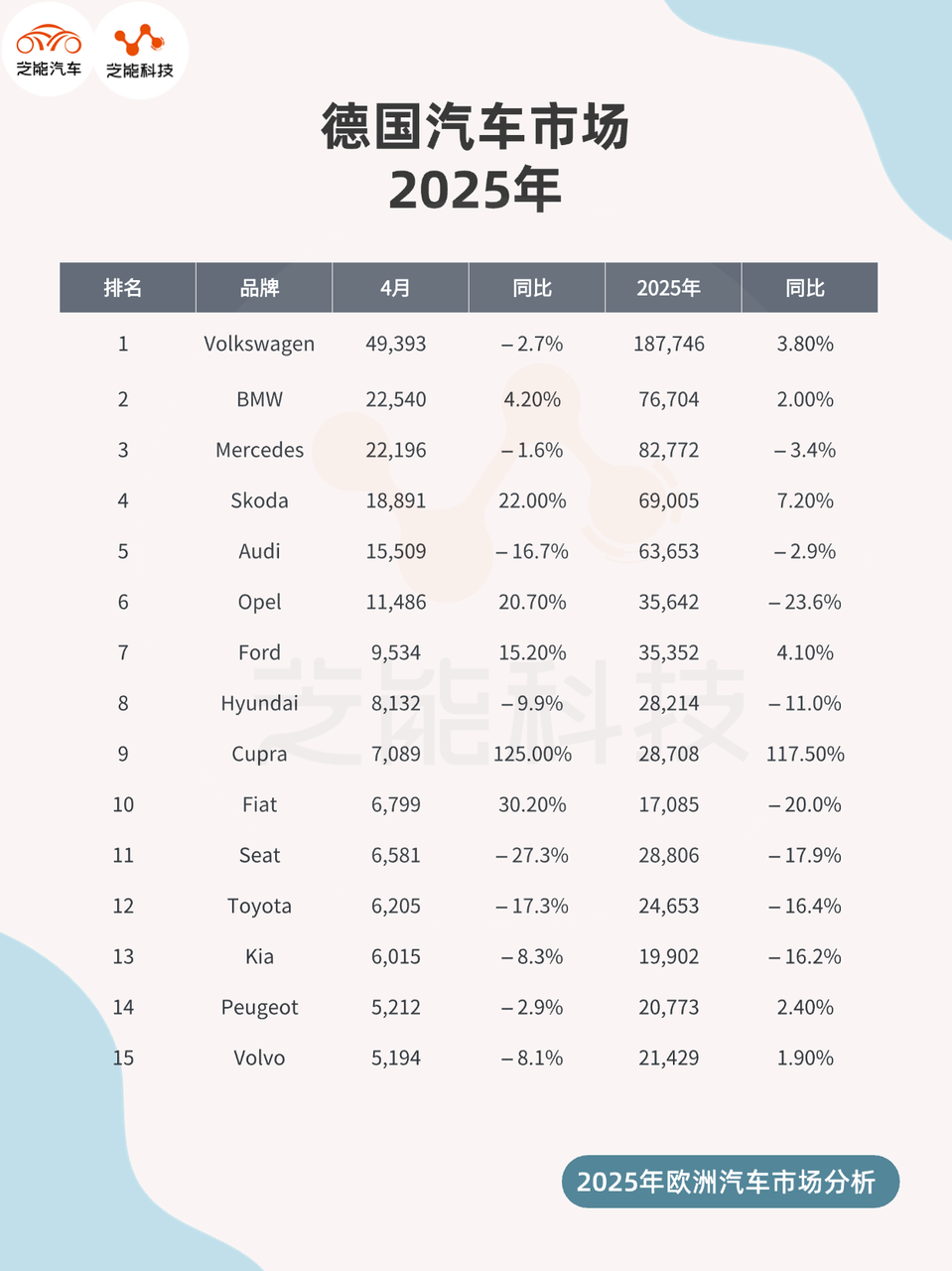
German local brands continued to dominate the sales charts:
- Volkswagen led the pack with 49,393 sales in April, accounting for 20.3% market share, a 2.7% year-on-year decline, yet maintaining a solid one-fifth of the market.
- BMW (+4.2%) surpassed Mercedes-Benz (-1.6%) for the first time, ascending to the second spot.
- Škoda (+22%) impressed with a 7.8% market share, emerging as one of the fastest-growing European brands among the top ten.
- Most notably, the Spanish brand Cupra surged, with April sales increasing by 125% year-on-year, ranking ninth with a 2.9% market share. This performance outpaced its parent brand Seat (-27.3%), suggesting that younger brands are gaining traction in the German market.
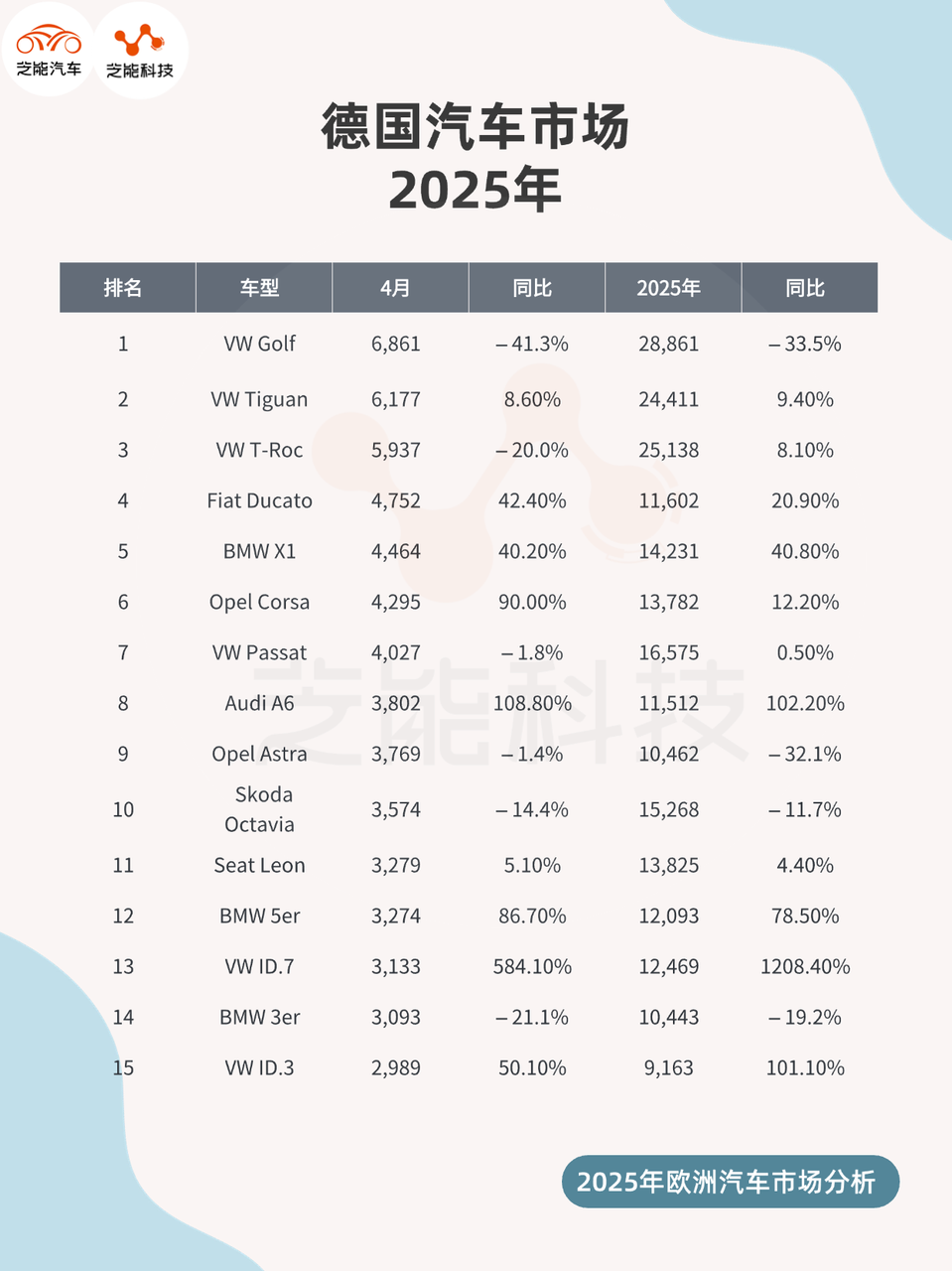
At the model level, despite a 41.3% year-on-year drop, the Volkswagen Golf retained its top sales position, underscoring the resilience of its core market.
Concurrently, several new energy models witnessed rapid growth:
- The Volkswagen ID.7 surged by 584.1%, indicating Volkswagen's growing presence in the pure electric sedan segment.
- The BMW 5 Series (+86.7%) and Audi A6 (+108.8%) showcased the fruits of luxury models' electrification transformation.
- Fiat Ducato (+42.4%) made a strong comeback amidst the camping van boom.
Among electric vehicle brands, Tesla, the traditional leader, experienced a sharp decline, with sales of 885 units, down 45.9% year-on-year, ranking 29th. This opened a rare window of opportunity for Chinese brands to break through.
02
Collective Push from Chinese Brands:
BYD Leads the Charge, MG and Roewe Steadily Ascend
MG maintained steady performance, selling 1,747 units in April, up 34% year-on-year. With cumulative sales of 7,245 units and a 26.1% increase for the year, MG remained the frontrunner among Chinese brands.
BYD demonstrated robust momentum, selling 1,566 units in April, surging by 755.7%. Cumulative sales for the year reached 2,791 units, up 384.5% year-on-year.
NIO Auto entered the market with a promising start, selling 314 units in a single month and 987 units cumulatively.
SAIC MAXUS grew by 242.9% in April, albeit with a small total volume, its astonishing growth rate was noteworthy.
In contrast, NIO and Great Wall Motor experienced declines of 64.2% and 46.2%, respectively, with negative growth in cumulative sales for the year.
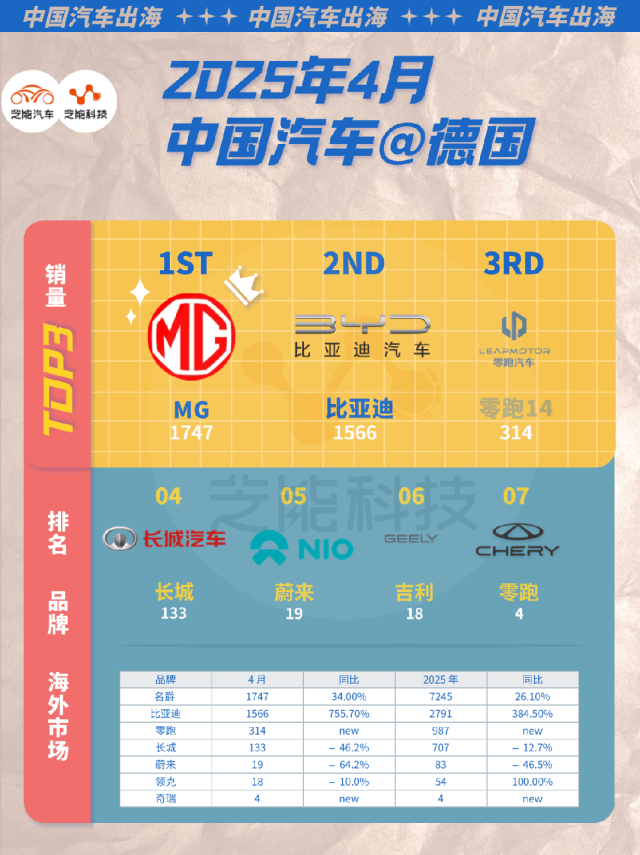
In April 2025, BYD sold 1,566 units in Germany, surging by 755.7% year-on-year, capturing a 0.6% market share. This successfully propelled BYD past Tesla, rising to the 26th position.
While the absolute numbers may still pale in comparison to mainstream brands, BYD's growth rate and symbolic significance cannot be overlooked:
- For the first time, BYD outperformed Tesla in a mature market like Germany, where brand perception and quality are paramount. This marks a significant breakthrough for BYD's brand influence in Europe.
- From the fringes of the market in April 2024 (ranking 37th) to the fringes of the mainstream in April 2025 (ranking 26th), BYD's network development, channel expansion, and brand adaptation have started to bear fruit.
Amidst Tesla's ongoing decline, BYD is gradually establishing itself as a "pragmatic electric vehicle" brand, resonating with European consumers' concerns about electric vehicle range, safety, and price.
Additionally, MG and Roewe under SAIC Group maintained stable performance in Germany. Combined sales of MG and Roewe in April totaled 1,747 units, up 34% year-on-year, ranking 25th, slightly ahead of BYD.
From the cumulative sales since the beginning of the year, MG/Roewe reached 7,245 units, up 26.1% year-on-year, showcasing SAIC's consistent efforts in enhancing brand recognition and product adaptability.
Unlike BYD, which focuses on the electric vehicle market, MG's product line spans both fuel and electric vehicles, offering high cost-effectiveness, European-inspired design, and rich configurations to cater to the needs of lower- and middle-income consumer groups in Europe. This represents a classic "function-oriented" strategy.
Summary
The German market remains a formidable stronghold characterized by high brand loyalty and robust competitive barriers. While the progress of BYD and MG/Roewe is encouraging, to truly transition from the fringes to the mainstream, Chinese automakers must intensify their efforts in localization, after-sales networks, quality management, and even lobbying EU policies. Transitioning from "quantity breakthrough" to "brand breakthrough" will be the litmus test for Chinese automakers' expansion into Europe over the next five years.

